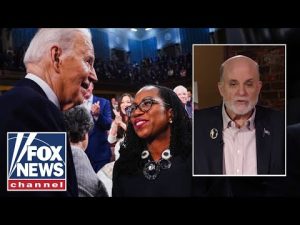In the world of international relations, a showdown is brewing, and it centers around none other than China. Former President Trump is making it crystal clear that his second term — should he win — will place great emphasis on addressing the issues the U.S. faces with the Asian giant. During a recent rally, he proclaimed that his administration’s tariffs on China were aimed at tackling what he referred to as “the greatest job theft in history.” The stakes are high, and both sides appear to be gearing up for a game of chess unlike any other.
The former President’s belief that China has pilfered millions of jobs from American workers resonates strongly with many conservatives. While acknowledging the complexities of diplomacy, Trump insists that a fair deal can still be struck with China, despite their current tariff rate resembling a rollercoaster going uphill — a hefty 145%. It paints a clear picture: there’s a huge gap between China’s trade practices and what American workers deserve. And if those negotiations do happen, well, there’s hope it won’t repeat the costly mistakes of the past when job losses soared under different leadership.
Experts like Gordon Chang have weighed in, suggesting that while a deal might be on the horizon, the Chinese government’s resistance to structural changes could pose a significant roadblock. History shows the Chinese haven’t always adhered to their trade commitments, such as during the much-touted phase one trade deal. So, how can America trust a new agreement? One avenue could be shifting manufacturing back to U.S. soil — a push that Trump and his supporters ardently argue will eventually secure the competitive edge for American manufacturing.
In fact, there’s already evidence that the tides are turning. Global manufacturing trends, fueled by automation and artificial intelligence, appear to favor the United States. Recently announced investments, like the one from Taiwan Semiconductor Manufacturing Company, reflect a renewed confidence in American capabilities. If Trump can pursue lower tax rates and encourage investment, the numbers suggest that American manufacturing may see a springtime revival.
However, China’s economic landscape isn’t all bright skies and sunshine. Reports are emerging that unrest is bubbling among Chinese workers who are demanding better working conditions and back pay as the tariffs have strained factory outputs. This could be a critical turning point, as it suggests that the U.S. may have more bargaining power than previously thought. The message is clear — while China might try to retaliate, any actions they take could end up further hurting their own economy.
As the interplay between these two economic powerhouses continues, one thing remains certain: the world will be watching closely. The outcome of these discussions can ripple through the global economy, reflecting on everything from job markets to consumer prices. Fueled by a blend of tenacity, strategy, and perhaps a sprinkle of humor along the way, the future of U.S.-China relations remains a prominent and riveting story. All eyes are on Trump and his approach to one of the United States’ most complicated international relationships, as the country holds its collective breath for what comes next.







